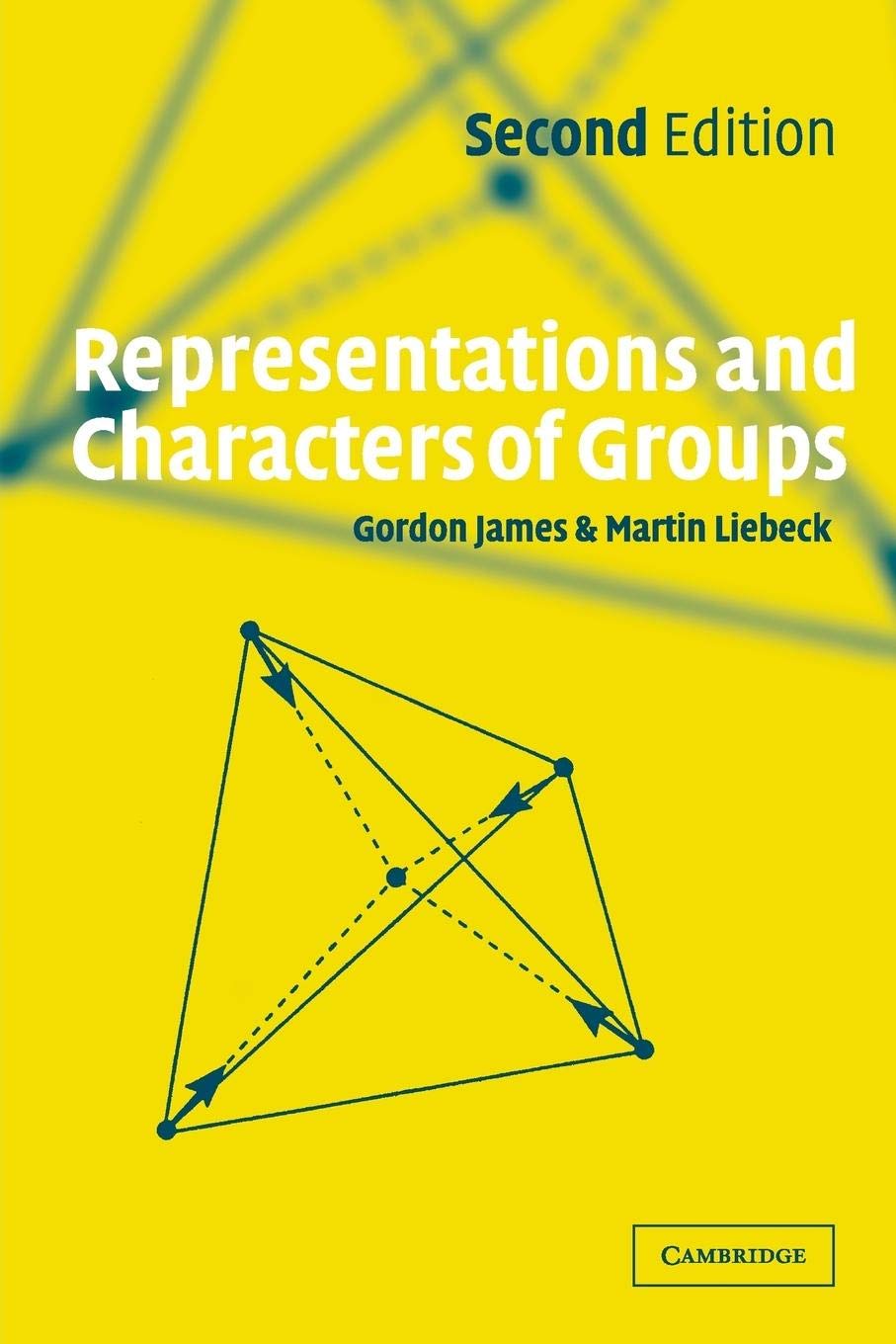

Full description not available
T**.
Very well written
The book is very well written, I thought particularly the chapters on normal subgroups, algebraic integers, and Burnside's theorem. There's also a ton of examples so it's very well suited for a first course in representation theory.
T**S
Not ideal, but probably the best out there
This is a text on representation and character theory that is suitable for anyone who has had one-semester courses in group theory and linear algebra and casual acquaintance with other algebraic structures like rings and modules. There are concrete examples for virtually every new concept and example applications for all major theorems. Moreover, there are dozens of character tables spread out throughout the text and the exercises.The organization of the text is into 32 short chapters, with each chapter corresponding to roughly a 50-minute lecture worth of material. Each chapter also has a conceptual summary of three key takeaway points, allowing the student to check that they don't lose the big picture. Every chapter has a large number of exercises, and all of them are solved in detail in the back of the text, making it very useful for self study as well as a lecture course. Overall the text is very student friendly.Unfortunately, the book's choice of notation seems ill-considered. For example, FG is used to refer to the FG-module, group algebra, and regular representation without a clear explanation for why this is justified. This is quite confusing for a beginner who is still trying to get a feel for what the various algebraic objects are. (In contrast, the Steinberg text is a lot more careful in this regard. Even Ash's Basic Abstract Algebra does a much better job of explaining the terminology (p. 267), despite the book only devoting a short section to representation theory.) The most unfortunate notation choice is the use of right group actions, so that if g in a group is acting on v, it is shown as vg, instead of g.v or g(v). Similarly, vgh means g then h applied to v, while most other books will show this as h(g(v)). To make things work out, row vectors multiplying on the left are used instead of column vectors on the right. It makes reading the text feel like you're writing with your left hand (if you're right-handed)!. However, the character of g is, for some reason, shown as χ(g), with χ on the left. Just as a minor gripe, the book is fond of using ϑ for homomorphisms. I think this is a variant form of θ? (At first, I thought it was a cursive I.)Overall, this is a well-written book, and certainly the best undergraduate text out there. The only comparable text is the Steinberg one, but that book is geared to a less mathematically mature audience while simultaneously giving fewer concrete examples, making it feel a bit 'hollow', though as pointed out above, the notation he uses is a lot clearer. Liebeck and James, on the other hand, shows a huge number of character tables as examples (for all the groups of order < or = 32 and many other important small groups), and is a uniquely detailed text that should be looked at by anyone taking an introductory course in representation theory.
D**K
gentle introduction
This is a nice book for undergraduates. You should know some group theory first and it would be helpful to know what modules are and what they are used for. If you don't understand modules, read a few pages in Dummitt & Foote, or something like that. Wikipedia is even good for that. For anybody (such as theoretical physicists) wanting to understand representation theory in the way mathematicians view it, it's the right type of book to read first before stuff like Fulton.
A**R
Wonderful
This is a great book. Well written and the copy I bought was in great condition
N**S
Helpful but quirky
The authors have ironed out some inconsistencies in the standard mathematical presentations. This makes things both easier and harder to understand - easier because it is internally more consistent, and harder because it's harder to relate to other texts. But the way material is presented is very good. I have the Kindle version and I'm also ordering the paperback.
A**R
Five Stars
Great book
D**R
Five Stars
an excellent introductory text on GRT. answers in the back to all exercises make it ideal for self-study.
S**Y
A Nice Introduction to Representation Theory
Not having a formal background inpure mathematics, I approached thesubject of the representation theoryof finite groups with some trepidation.Having looked at various books in thefield, I found that the book byJames and Liebeck was the clearestand most readable exposition ofthe subject.There is little fuss or abstractformalism that might obscure themeaning of the fundamental conceptsand theorems. The material is clearlywritten and very well organized.The chapters are very short, thankfully,and the best thing is that there arecomplete worked solutions to all thechapter exercises.The book ends with a nice applicationof the theory to molecular vibration.(As always, it helps to know the basicfacts about groups, and linear algebra -vector spaces, linear transformations,matrices etc.)An excellent book!
Trustpilot
1 day ago
1 month ago